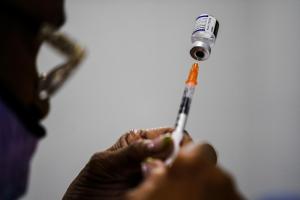By Deborah Bailey,
AFRO Contributing Editor
Diabetes remains at the top of the list as the White House and members of Congress fight to lower prescription drug costs for all diabetic patients. For the second year in a row, President Joseph Biden used this month’s State of The Union address to emphasize his administration’s vow to cap insulin prices at $35 per month.
Staunch advocates ranging from long established advocacy organizations like the American Diabetes Association (ADA) and the Endocrine Society to grassroots patient advocates have drawn attention to a frightening rise in insulin prices, and have championed the fight to lower drug prices for all prescription drugs.
“Spending on insulin in the US rose astronomically in the past decade, from $8 billion in 2012 to $22.3 billion in 2022,” said Charles “Chuck” Henderson, CEO of the ADA. “The cost for insulin is simply unsustainable for many people; particularly patients of color in our most underserved communities.”
Professional policy advocates like Henderson have combined forces with patient advocates and everyday citizens on social media with hashtags like #diabetes and #insulin4all. Together, they have pushed the Biden administration and Congress to move toward insulin affordability for the 8.4 million Americans who need it each day to survive.
Within the first 20 minutes of the president’s address to Congress this month, Biden hit hard on lowering prescription drug prices using the cost of insulin as the example of drug prices that Biden was using legislation and collaboration with major pharmaceuticals to reign in.
“Instead of paying $400 a month for insulin, seniors with diabetes only have to pay $35 a month. And now I want to cap the cost of insulin at $35 a month for every American who needs it,” Biden said, referring to the $35-a-month cap made possible through the Inflation Reduction Act (IRA). “For years people have talked about it but I finally got it done and gave Medicare the power to negotiate lower prices for prescription drugs just like the VA does for our veterans.”
Last year, the IRA capped insulin prices at $35 per month for Medicare part D enrollees in January 2023. Medicare Part B enrollees began receiving the benefit in July 2023.
Pharmaceutical corporations began stepping up as well to announce their own price caps on insulin. In March 2023, Eli Lilly was the first major pharmaceutical firm to announce a program to reduce the listing price for insulin and expand a $35 price cap.
In January 2024, Novo Nordisk reduced the price of four of their legacy brands, Novolin and Levemir, by 65 percent per vial and NovoLog and NovoLog Mix by 75 percent per vial. Sanofi, the last major pharmaceutical to announce price caps, reduced its most popular insulin brands, Lantus by 78 percent and Apidra, a short-acting insulin, by 70 percent for each vial.
Patients will still pay more than the $35-a-month price cap without insurance reductions or other discounts.
More than 38 million Americans are diabetic with 90 percent of those cases being Type 2 Diabetes, according to the Centers for Disease Control and Prevention (CDC). This is one in 10 Americans.
The situation is even more urgent for Black Americans. Black adults develop diabetes at nearly twice the rate of our White counterparts with the greatest disparity being between Black women and White women who develop Type 2 Diabetes.
“Type 2 Diabetes has become America’s quiet epidemic,” said Erika Walker Williams, assistant professor and diabetes specialist in the department of internal medicine at University of Texas, Southwestern in Dallas.
Black adults are hospitalized due to complications with diabetes at more than twice the rate of Whites; three times more likely to be diagnosed with end-stage renal disease, and twice as likely to die from the illness as our White Counterparts, based on data from the U.S. Department of Health and Human Services Office of Minority Health.
These grim statistics raise the same kinds of concerns the medical community expressed during the Covid-19 epidemic that ended less than a year ago.
In fact, Walker Williams said, diabetes has already been declared an epidemic by the CDC in 1994 – 30 years ago. Since then, the rate of persons diagnosed with diabetes has accelerated in the US. Add to that, the 90 million Americans living with pre-diabetes, and the magnitude of diabetes on the American landscape comes more clearly into view.
This article is the first of a five-part Spring 2024 series on Black health. This series highlights diabetes as a doorway to systemic illness, as well as the solutions that are underway in communities across America. The next piece in this five- part series will present a report from the Collaboration for Equitable Health, a partnership between the American Diabetes Association, The American Heart Association and the University of Michigan School of Public Health to improve health outcomes for persons of color in some of the highest health risk communities across the U.S. for Black Americans and other persons of color. This article is written in partial fulfillment of a fellowship from the Gerontological Society of America, Journalists Network on Generations.











